Filter News
Area of Research
- (-) Materials (57)
- Advanced Manufacturing (8)
- Biological Systems (1)
- Biology and Environment (37)
- Building Technologies (1)
- Clean Energy (118)
- Climate and Environmental Systems (2)
- Computational Biology (1)
- Computational Engineering (2)
- Computer Science (4)
- Electricity and Smart Grid (1)
- Fossil Energy (1)
- Fusion and Fission (14)
- Fusion Energy (1)
- Isotopes (12)
- Materials for Computing (18)
- Mathematics (1)
- National Security (7)
- Neutron Science (31)
- Nuclear Science and Technology (8)
- Quantum information Science (3)
- Renewable Energy (2)
- Sensors and Controls (1)
- Supercomputing (43)
- Transportation Systems (2)
News Topics
- 3-D Printing/Advanced Manufacturing (3)
- Artificial Intelligence (1)
- Bioenergy (1)
- Biology (1)
- Chemical Sciences (2)
- Climate Change (1)
- Composites (1)
- Computer Science (2)
- Critical Materials (2)
- Cybersecurity (1)
- Energy Storage (1)
- Frontier (1)
- Fusion (1)
- Isotopes (1)
- ITER (1)
- Materials (7)
- Materials Science (5)
- Microscopy (5)
- Nanotechnology (6)
- Neutron Science (3)
- Physics (1)
- Polymers (1)
- Quantum Computing (1)
- Quantum Science (2)
- Space Exploration (1)
Media Contacts
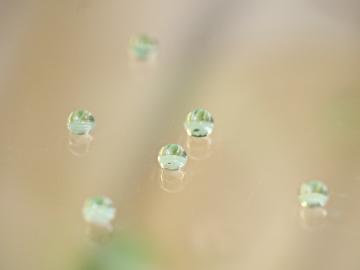
Samsung Electronics has exclusively licensed optically clear superhydrophobic film technology from the Department of Energy’s Oak Ridge National Laboratory to improve the performance of glass displays on smartphones, tablets and other electronic devices.
O...
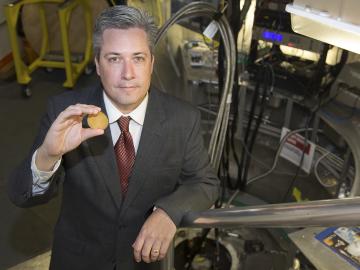
The lighter wand for your gas BBQ, a submarine’s sonar device and the ultrasound machine at your doctor’s office all rely on piezoelectric materials, which turn mechanical stress into electrical energy, and vice versa. In 1997, researchers developed piezoelectric...
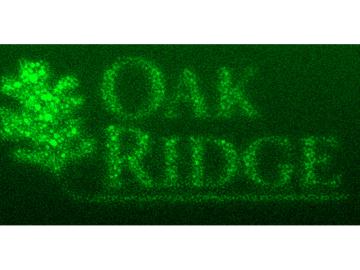
Scientists at the Department of Energy’s Oak Ridge National Laboratory are the first to harness a scanning transmission electron microscope (STEM) to directly write tiny patterns in metallic “ink,” forming features in liquid that are finer than half the width of a hum...
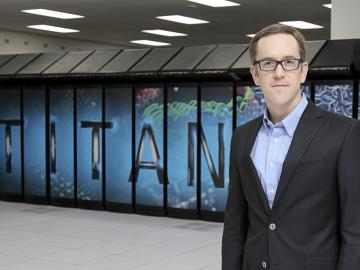
The US Department of Energy announced today that it will invest $16 million over the next four years to accelerate the design of new materials through use of supercomputers.
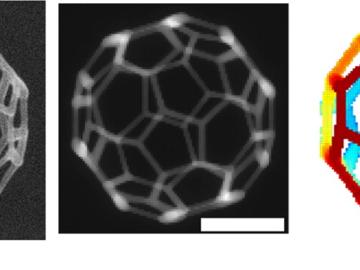
Designing a 3-D printed structure is hard enough when the product is inches or feet in size. Imagine shrinking it smaller than a drop of water, smaller even than a human hair, until it is dwarfed by a common bacterium.
This impossibly small structure can be made a reality with fo...
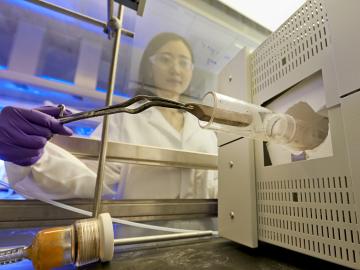
A team of scientists led by the Department of Energy’s Oak Ridge National Laboratory has developed a novel way to produce two-dimensional nanosheets by separating bulk materials with nontoxic liquid nitrogen. The environmentally friendly process generates a 20-fold ...
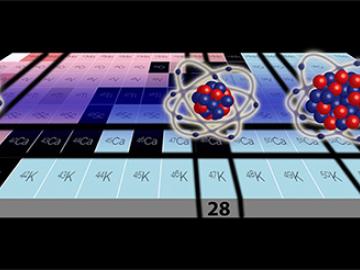
A multi-institution team led by Oak Ridge National Laboratory’s Gaute Hagen used computation to corroborate experimental findings throwing calcium-52’s status as a magic isotope into question.
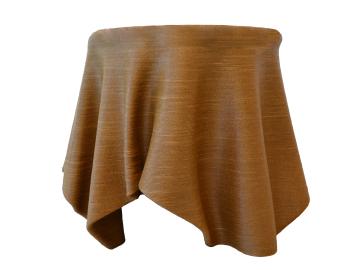
Researchers at Oak Ridge National Laboratory are using bamboo fiber in 3-D printing experiments to determine whether bio-based feedstock materials are feasible in additive manufacturing.
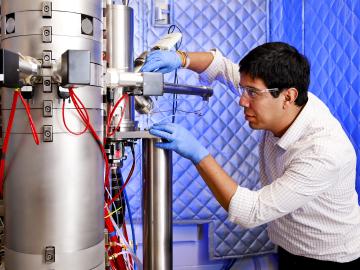
Scientists can now detect magnetic behavior at the atomic level with a new electron microscopy technique developed by a team from the Department of Energy’s Oak Ridge National Laboratory and Uppsala University, Sweden. The researchers took a counterintuitive approach ...
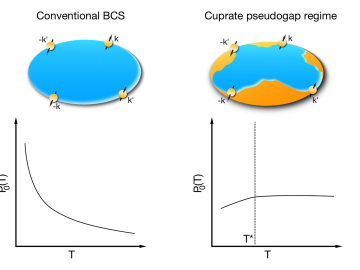
When physicists Georg Bednorz and K. Alex Muller discovered the first high-temperature superconductors in 1986, it didn’t take much imagination to envision the potential technological benefits of harnessing such materials.




